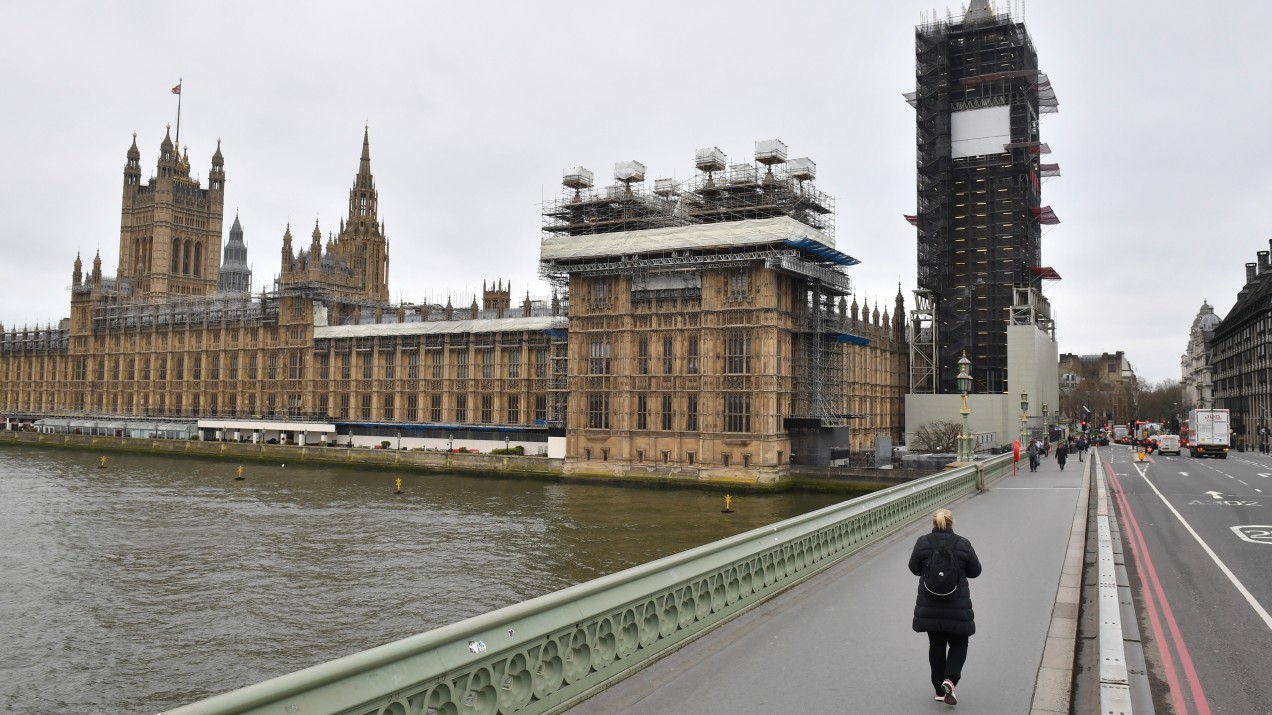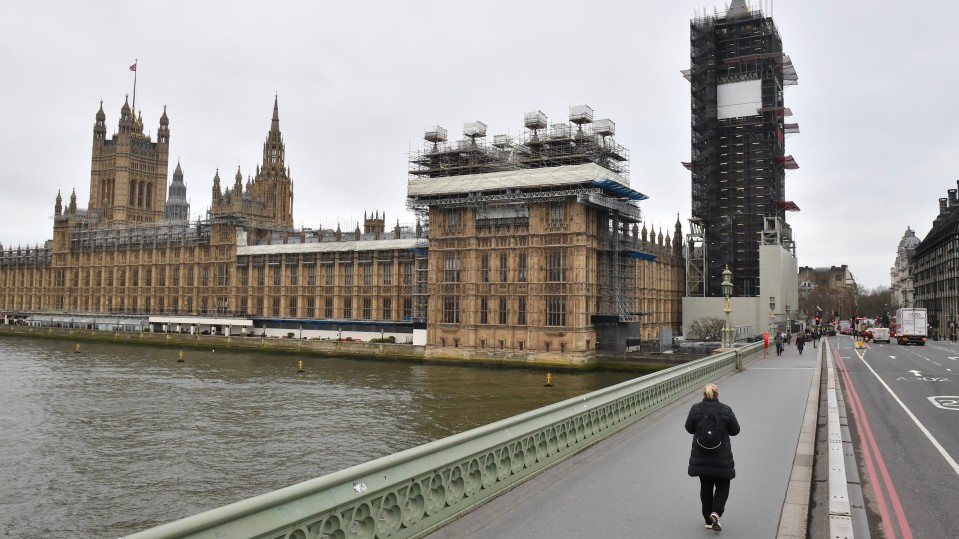

Tech Policy / Tech and Health
A bloody battle or a long war? The ethical dilemma of tackling coronavirus
Francois Balloux, a computational epidemiologist who worked on an influential new coronavirus model, on the trade-offs that have to be made.

Yesterday the UK government dramatically revised its official advice on the basis of a new model developed by a team at Imperial College London. The model shows the probable outcomes of two broad strategies: mitigation, which lets the virus run its course but aims to reduce the rate of transmission to levels that do not overwhelm health-care services, and suppression, which aims to reduce the rate of transmission to zero until a vaccine is found.
Following the model, the UK government is now adopting a strategy closer to suppression than mitigation. The model is influencing policy in the US as well. I called Francois Balloux, a computational epidemiologist at University College London, who worked with the Imperial researchers when they were developing the model. This Q&A is edited for clarity.
You can read all our coverage of the coronavirus/Covid-19 outbreak for free, and also sign up for our coronavirus newsletter. But please consider subscribing to support our nonprofit journalism.
A model is only as good as what you put into it. What assumptions does this model make?
I think the model is pretty sophisticated. It is detailed and realistic, but there are many, many assumptions, and some of them are not super-explicit. But in terms of ballpark figures, I think it’s right. It doesn’t give specific numbers but suggests ranges. This many people are likely to need expensive care. This many are likely to die. But the numbers are big whatever happens. The report is not the nicest read, and the scenarios are actually pretty optimistic.
In what way?
There are a few important variables not built in. For instance, it makes the assumption that if someone is infected, they will be immunized for life. But that’s something we don’t actually know. We don't know how long people stay immunized after they recover—if they can catch the disease twice, and if they can, after how many months. That would change the outcome quite a bit, and not for the better.
The other thing that the model does not take into account properly is seasonality. So, for instance, the common cold is much more common in winter than in summer. The common cold is also a coronavirus, and in some ways the two are not that different. But the model doesn’t really account for that change through the year. I’m not saying they should have looked at the effect of warm or cold weather on the virus. Rather, they just assume that there will be a certain number of hospital beds throughout the year, which isn’t true. The NHS is really stretched in winter. If those ICU beds are not free in winter, an outbreak would be much worse.
The model also includes assumptions about people’s behavior. How does that work?
Social distancing is modeled via a reduced transmission rate. You assume that if people aren’t close together, then the rate of transmission drops. Sure, you assume in the model that social distancing or isolation is implemented effectively. But if you look at the numbers, they’re not saying there must be absolutely no contact between people. They only say that contact is reduced by x or by y amount.
Yes, the model assumes that a certain percentage of people will comply with official advice. Yet we don't know what people are going to do. We can advise them not to go out to cafes, we can advise them not to go to work, but if you don’t enforce those policies—which is happening in many countries but is not on the table in the UK or the US—how do you know those assumptions are correct?
That's not exactly true. Sure, you can advise people not to go out, and people are free to listen to you or not. It will depend on how well the message is conveyed and whether people are really scared about their own health. It is extreme, especially in democratic countries, to see people threatened with huge fines if they go out for a non-essential reason or are in a gathering of a certain size.
I'm not a psychologist, but I think people will comply by themselves. I don’t worry too much about that. Two weeks ago it was different, when people would say, “Oh it’s just the flu.” But now that it is getting serious, attitudes will change very quickly. People are starting to worry, and when people are worried they listen to advice. Anyway, the assumption that people cannot become infected more than once is far more important to the accuracy of the model than whether or not people comply.
The model also seems to assume that the number of ICU beds will remain fixed. Why can’t we add more?
In the UK there are around 400 ICU beds, and 80% are occupied. There are 100,000 standard hospital beds, and some of those could be refitted to become ICU beds. But it’s not simply about beds. You’d need equipment, including ventilators—which we need very, very quickly—but even if it is possible to set up these extra ICU beds, that’s just one problem solved. You also need the people. ICU doctors and nurses are highly trained—you can’t just take anyone.
The government has now changed course and seems to be following a strategy closer to suppression than mitigation. Is that what the model recommends?
The model says that mitigation has a big downside: it will lead to many deaths in the first few months. But it doesn’t say explicitly that it is the worse strategy. Very few people have understood that. On one hand mitigation has devastating short-term consequences, including a high number of deaths, especially among older people. But the other option, suppression, assumes that extremely strong social restrictions stay in place until a vaccine is found that works, which might not happen. There is no easy solution. Another thing to consider closely is the impact of any long-term strategy on the economy. Because if there’s a massive economic downturn, then that will also have a strong impact on people’s health.
So with mitigation you’re gambling with people’s lives, saying that a lot of people will die in the short term. But with suppression you’re gambling on an unknown future, in which people will die over a longer period.
Essentially, yes. If you were at war, you might accept that losing a lot of people in the first battle was worth it if it meant bringing about a quicker ending. But it is important to note that the model doesn’t say which is better. Either way, it’s a choice. If you weigh up mitigation and suppression, considering how they might develop over one or two years, I’m not sure what the answer is. Of course, that’s from the scientific perspective.
There are ethical and political perspectives on top of that, including a complete refusal to accept a dramatic number of deaths in the short term. But the model itself does not tell us which is the right option, even if you want to know which strategy would save more lives overall. In fact, I wonder to what extent social distancing is acceptable to the population. But don’t get me wrong. I don’t have the answer. It’s a very, very challenging problem that we’re facing.